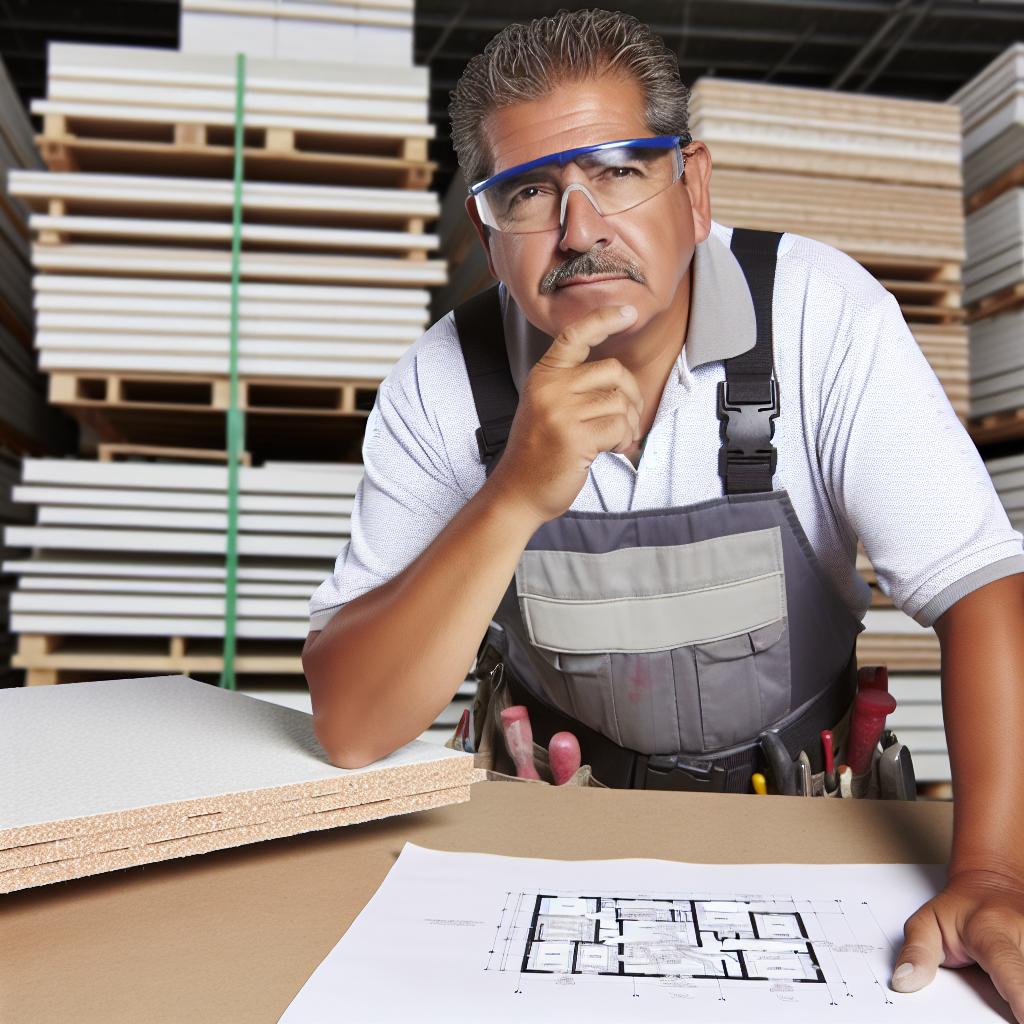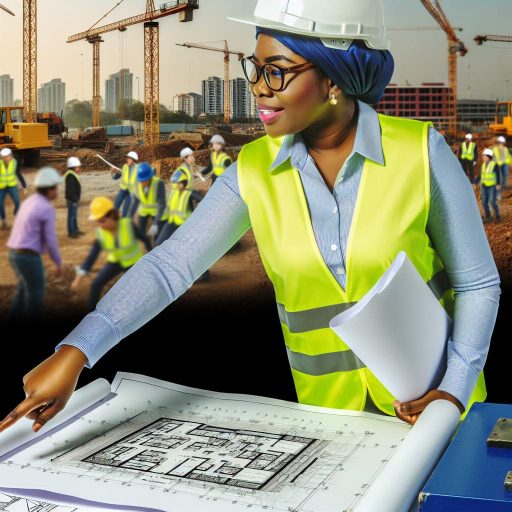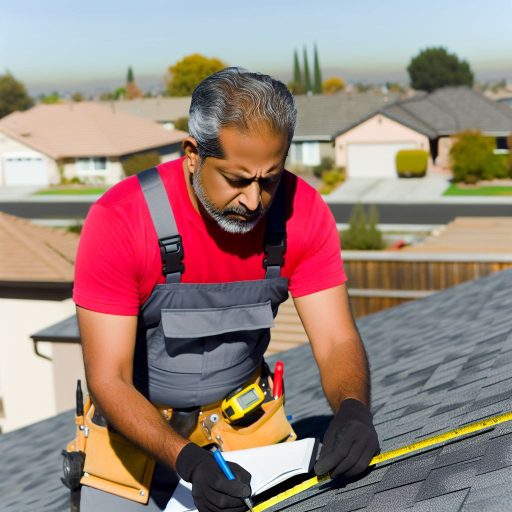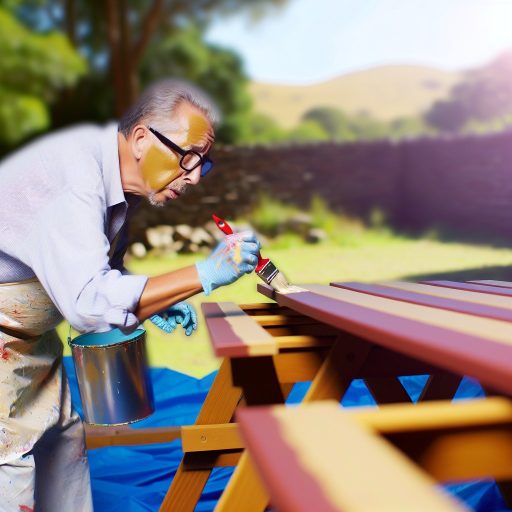Introduction
Choosing the right drywall for your project is crucial for ensuring a successful outcome.
The type of drywall you select can impact not only the aesthetics but also the functionality and durability of your walls.
Brief Overview of Importance
It is essential to choose the right drywall to meet the specific needs of your project.
From moisture resistance to fire resistance, different types of drywall offer varying benefits that can make a significant difference in the overall performance of your walls.
Different Types of Drywall
There are several types of drywall available in the market, each designed for specific applications.
Some of the most common options include standard drywall, moisture-resistant drywall, fire-resistant drywall, soundproof drywall, and green board.
Assessing your project needs
Determining the right drywall for your project starts with assessing your specific needs.
Here are some key points to consider:
Determine the purpose of the space where the drywall will be installed
- Will it be a high-traffic area like a hallway or living room?
- Is it a moisture-prone area like a bathroom or basement?
- Or is it a space where soundproofing is essential, like a home office or media room?
Consider factors like moisture levels, noise reduction, and fire resistance requirements
- If moisture is a concern, consider moisture-resistant drywall such as green board or cement board.
- For noise reduction, opt for soundproof drywall or add an extra layer of insulation.
- For fire resistance, look for fire-rated drywall that can help contain flames in case of a fire.
By carefully evaluating these factors, you can choose the right type of drywall that best suits your project’s specific needs.
Understanding different types of drywall
Explain the characteristics of regular drywall, green board, blue board, and fire-resistant drywall.
Discuss the differences in thickness and application for each type.
Regular Drywall
Regular drywall is the most common type used in construction.
It is made of gypsum core covered in paper and comes in various thicknesses.
Green Board
Green board is water-resistant and suitable for areas prone to moisture.
It is particularly useful in bathrooms and kitchens.
Blue Board
Blue board is designed for veneer plastering and provides a smoother finish.
This type has a blue wrapping that distinguishes it from other boards.
Fire-Resistant Drywall
Fire-resistant drywall, also known as Type X, is made with added fiberglass.
It is utilized in high-risk areas for increased fire resistance.
Differences in Thickness and Application
- Regular drywall is available in 1/4 inch, 3/8 inch, 1/2 inch, and 5/8 inch thicknesses.
- Green board is generally 1/2 inch thick and suitable for high humidity areas.
- Blue board is also 1/2 inch thick and primarily used for veneer plastering applications.
- Fire-resistant drywall is typically 5/8 inch thick and utilized where fire protection is required.
Choosing the right drywall for your project depends on specific requirements of the space.
Transform Your Career Today
Unlock a personalized career strategy that drives real results. Get tailored advice and a roadmap designed just for you.
Start NowConsider factors such as moisture levels, fire safety, and finish quality.
Each type has its unique characteristics and applications.
Assess your needs carefully before making a decision.
Discover More: Construction Manager’s Role in Client Relations
Budget considerations
Choosing the right drywall for your project involves various factors.
Budget is a crucial consideration.
Drywall costs can vary significantly depending on the type you choose.
Compare the cost of different types of drywall.
Standard drywall is the most common and budget-friendly option.
However, other types such as moisture-resistant, fire-resistant, and soundproof drywall may be more expensive.
Factor in installation costs and long-term maintenance when making a budget.
In addition to the cost of the drywall itself, you should also factor in installation costs.
Long-term maintenance expenses are important to consider as well.
Hiring a professional to install the drywall can add to your overall project cost.
Consider whether you have the skills and tools required for DIY installation to save money.
Certain types of drywall may require more maintenance over time, leading to additional expenses.
Moisture-resistant drywall is more costly but can prevent mold and mildew growth in damp areas.
Consider the specific needs of your project to determine if investing in higher quality drywall is worth it in the long run.
Ultimately, it’s crucial to strike a balance between your budget constraints and the quality of drywall.
Showcase Your Business Today
Reach thousands of readers actively exploring professional services. Publish your business profile and grow your audience now.
Publish NowResearch different types of drywall and their associated costs.
Make an informed decision that meets both your financial and project needs.
Discover More: Incorporating Wildlife Habitats into Landscape Designs
Environmental Impact
When choosing the right drywall for your project, it’s important to consider its environmental impact.
- Consider using eco-friendly drywall options
- Discuss the benefits of using sustainable materials for your project
Opting for eco-friendly drywall options can have a positive impact on the environment.
These materials are made from recycled content or renewable resources, reducing the need for virgin materials.
By choosing sustainable materials for your project, you can help reduce your carbon footprint and support environmentally friendly practices in the construction industry.
Sustainable drywall options offer a variety of benefits, including improved indoor air quality, energy efficiency, and durability.
One popular eco-friendly drywall option is recycled drywall.
This type of drywall is made from recycled gypsum and paper, diverting waste from landfills and conserving natural resources.
Recycled drywall is just as durable and reliable as traditional drywall, making it a great choice for environmentally conscious builders.
Another sustainable drywall option to consider is mold-resistant drywall.
This type of drywall is specifically designed to resist mold and mildew growth, helping to maintain a healthy indoor environment.
Mold-resistant drywall is often made with recycled or low-emission materials, further reducing its environmental impact.
In addition to eco-friendly drywall options, it’s important to consider the overall sustainability of your project.
This includes choosing energy-efficient building materials, reducing waste during construction, and incorporating green building practices.
By prioritizing sustainability in your project, you can create a more eco-friendly and environmentally responsible space.
When selecting the right drywall for your project, keep the environmental impact in mind.
Choose materials that are eco-friendly and sustainable to minimize your carbon footprint and promote a greener construction industry.
Discover More: Pipelayer Workwear: Essential Gear and Apparel

Hiring a Professional Contractor
When it comes to choosing the right drywall for your project, hiring a professional contractor is key.
- Seek Recommendations for Reputable Drywall Contractors
- Start by seeking recommendations from friends, family, or neighbors who have recently had drywall work done. You can also ask for referrals from local hardware stores or construction supply stores.
- Ask for Quotes and Compare Services Offered by Different Contractors
- Once you have a list of potential contractors, reach out to them to ask for quotes. Make sure to provide details about the size and scope of your project so they can give you an accurate estimate. Compare the quotes along with the services offered by each contractor to make an informed decision.
By hiring a professional contractor, you can ensure that the drywall installation or repair will be done correctly and efficiently. Plus, you can benefit from their expertise and guidance throughout the process.
Discover More: Training Programs for Aspiring Insulation Workers
When selecting the right drywall for your project, there are several key factors to consider.
These factors ensure the quality and durability of your installation.
Conducting tests and inspections throughout the process is crucial to identify any issues that may arise.
Testing and Inspection
- Conduct tests on the drywall to ensure quality and durability
- Inspect the installation process to identify any issues
Testing is a crucial step in ensuring that the drywall you choose is of high quality.
It will provide the durability required for your project.
By conducting tests on the drywall, you can identify any potential issues before installation.
This will save you time and money in the long run.
One important test to consider is the flexibility test.
This test assesses how well the drywall can withstand bending and pressure.
This test is crucial, especially in areas where the drywall may be subject to movement or impact.
Another test to consider is the fire resistance test.
This is particularly important if you are installing drywall in areas where fire safety is a concern.
Fire-resistant drywall can help prevent the spread of flames.
It can also buy valuable time in the event of a fire.
Once you have completed the necessary tests, it is important to inspect the installation process.
This inspection ensures that it is done correctly.
Inspecting the installation will help you identify any issues that may affect the quality and longevity of your drywall.
Showcase Your Business Today
Reach thousands of readers actively exploring professional services. Publish your business profile and grow your audience now.
Publish NowDuring the installation process, be sure to check for proper alignment and placement of the drywall sheets.
Any misalignment can lead to issues such as cracking or sagging over time.
This compromises the integrity of your installation.
Additionally, inspect the seams and joints of the drywall.
Ensure that they are properly sealed and finished.
Properly sealed seams are essential for maintaining the structural integrity and aesthetics of your drywall installation.
Overall, testing and inspection are essential steps in choosing the right drywall for your project.
By conducting tests on the drywall and inspecting the installation process, you can ensure the highest quality of your drywall installation.
This will provide the durability and longevity you need.
Choosing the Right Drywall for Your Project
Choosing the right drywall is crucial for the success of your project.
It affects the aesthetics, durability, and safety of the structure.
Consider the type of drywall based on the room’s purpose.
Moisture-resistant drywall is perfect for bathrooms and kitchens.
Another essential factor is the thickness of the drywall.
Thicker drywall provides better soundproofing and insulation.
For fire resistance, opt for Type X drywall in areas prone to fires.
It can slow down the spread of flames.
Joint compound and finishing techniques also play a significant role in the final appearance of the walls.
Choose the appropriate materials.
Additionally, think about the environmental impact of the drywall.
Green options like recycled drywall are eco-friendly choices.
The right drywall selection leads to a long-lasting and aesthetically pleasing finish for your project.
Each aspect of choosing drywall impacts the overall outcome of your project.
Invest time and effort in selecting the best drywall for your needs.
Additional Resources
New Mexico Department of Workforce Solutions > Labor Relations …
Contractors: How do you find work to bid? : r/Construction
[E-Books for Sale]
The Big Book of 500 High-Paying Jobs in America: Unlock Your Earning Potential
$19.99 • 500 High-Paying Jobs • 330 pages
Explore 500 high-paying jobs in America and learn how to boost your career, earn more, and achieve success!
See All 500 High-Paying Jobs of this E-Book
1001 Professions Without a Degree: High-Paying American Jobs You Can Start Now
$19.99 • 1001 Professions Without a Degree • 174 pages
Discover 1001 high-paying jobs without a degree! Unlock career tips, skills, and success strategies for just $19.99!




